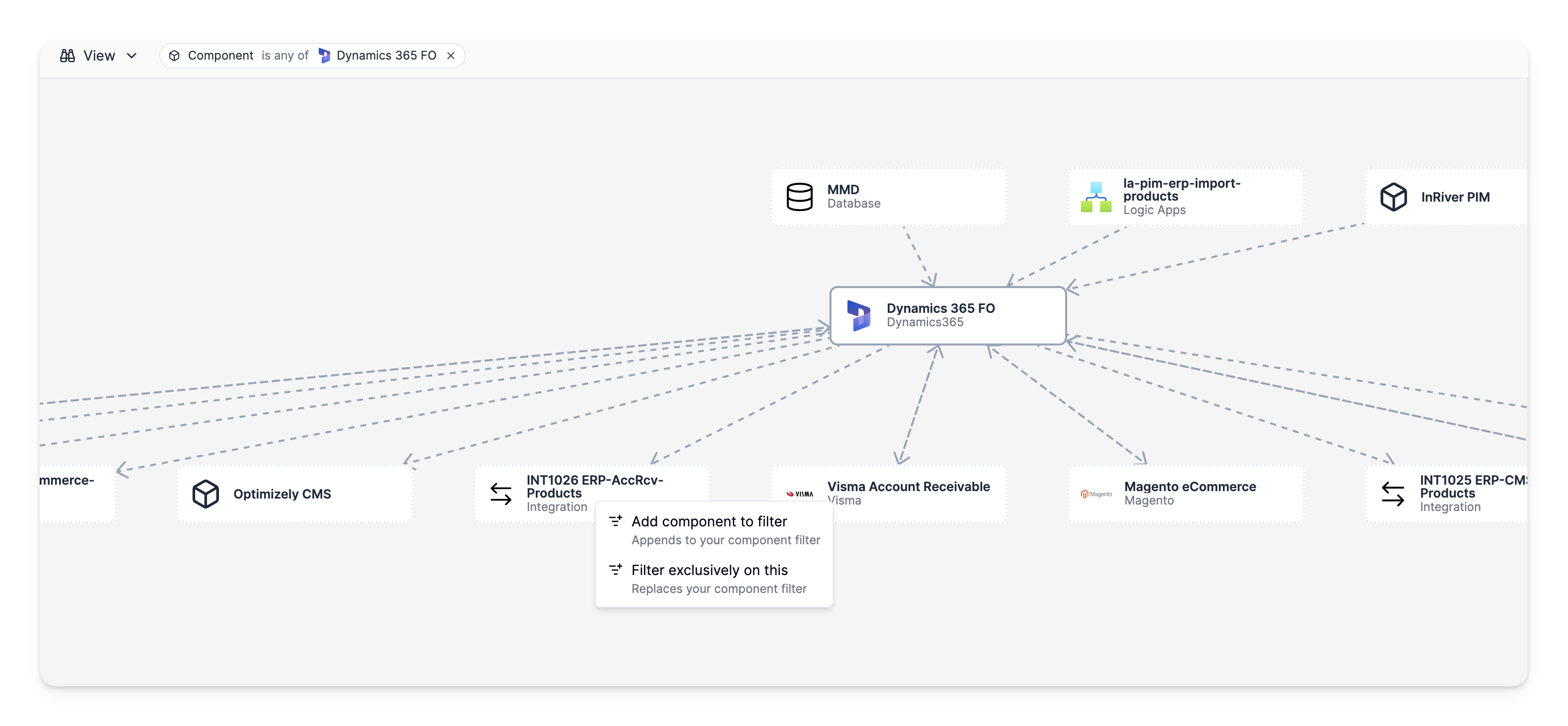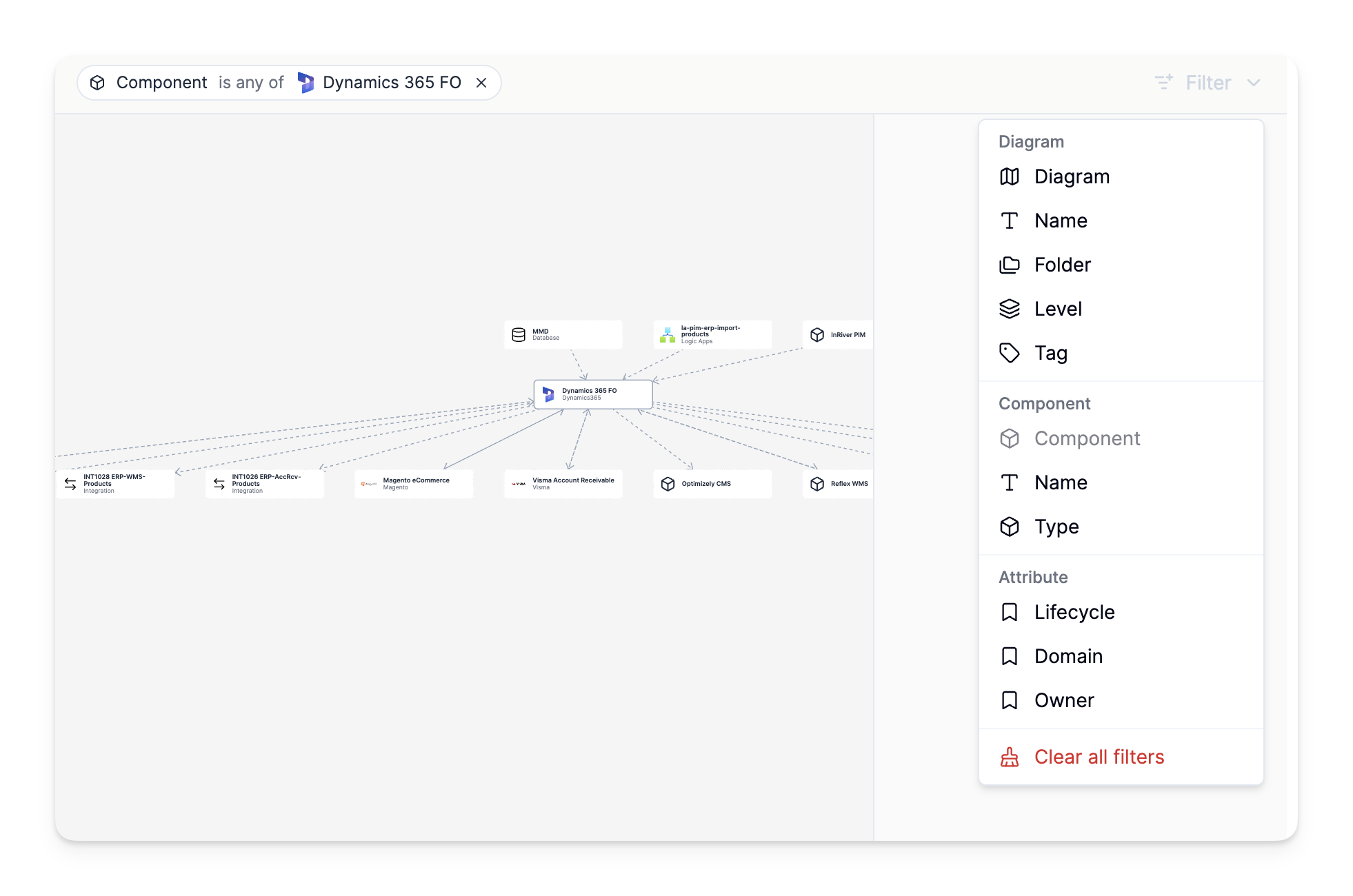Go Beyond Diagrams: Model-Based Dependency Graphs for Smarter Application Integration Management

Modern software systems are rarely simple. As applications, APIs, and data pipelines become increasingly interconnected, understanding how everything fits together is a growing challenge — especially in Application Integration Management and architecture planning.
Dependency Graphs help solve that by giving you a clear, interactive view of the relationships within your system.
From diagrams to architecture models
Most diagramming tools treat architecture like a static drawing — boxes and lines with no real meaning underneath.
Here, every diagram is backed by a structured model. That means the system understands what each component is, how it connects to others, and how those connections evolve over time.
Instead of just showing what was drawn, we reveal how everything is actually connected — and how changes ripple across the system.
See what connects to what — and why it matters
The new Dependency Graphs feature makes it easy to explore your architecture visually. Built directly from your existing data, it helps you:
- Discover upstream and downstream dependencies
- Visualize integration flows between systems
- Spot bottlenecks, circular dependencies, or fragile links
- Trace the impact of a proposed change across your environment

In this example, we’ve focused the graph on Dynamics 365 FO. It reveals how this system interacts with other components such as Magento eCommerce, Visma Account Receivable, and Reflex WMS. By narrowing the view, you can quickly map integration touchpoints and assess the ripple effects of changes — without getting lost in the noise of the full architecture.
Focus on what matters with filters
Large architectures can be overwhelming. That’s why we’ve included filtering options — so you can zoom in on just what you need.
Filter by domain, system, tag, or any custom metadata. It’s fast, flexible, and fully integrated with your model.

This makes it ideal for working across team boundaries or understanding how integrations affect specific parts of the business.
Built for Application Integration Management
Integration work is often where architectural complexity shows up first. Dependency Graphs make it easier to:
- Map integration touchpoints clearly
- Avoid duplicate or redundant solutions
- Understand system interdependencies before you make changes
- Share a living, up-to-date view of how things connect
Because it’s model-driven, your documentation and analysis stay consistent — no more manually updating disconnected diagrams.
Why this is different
What sets this apart is the model-driven approach. You’re not just sketching — you’re working with an architecture that understands itself.
This opens the door to smarter tooling: not just Dependency Graphs, but impact analysis, consistency checks, and future features that help you stay ahead of architectural drift.
💡 Want to dive deeper? See the changelog entry or try it directly in your workspace.